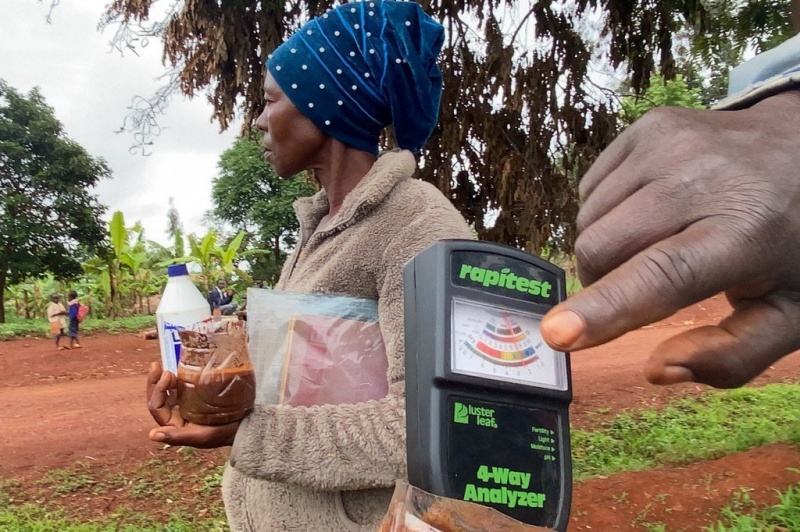Farmers in Makete District are advised to test the health of the soil in their farms to increase productivity in various crop farming, including corn, wheat, potatoes and other crops.
The call was made by Agricultural Officer Mr. Lazaro Kasebwa, who said the government had established a process for soil health testing, where testing costs have been simplified. Now, a farmer can get this service within Makete District in a few days, unlike previously.
The soil testing service is available to every farmer where the farm manager will go to the specific farm, take the soil and deliver it to the district where the testing will take place within 7 to 14 days.
He also added that the farmer will have to contribute a fee of 40,000 Tanzanian shillings for the soil health testing.
“Farmers, let’s build a habit of examining the health of our soil; failing to do so, we are killing the farms and incurring many losses resulting from farming without expertise…by testing the soil, a farmer will be able to identify the amount of fertilizer he needs to use on his farm,” emphasized the expert.
Tanzania is one of the leading countries in the East African region in terms of large-scale production of food and commercial crops compared to countries like Uganda, Kenya, Rwanda, Burundi and South Sudan. Several policies and slogans have been popular in promoting agricultural production such as ‘agriculture is the backbone of the nation’, politics is agriculture which came from the Iringa Resolution along with the ‘Agriculture First’ policy. These policies have been successful to some extent as they have provided an opportunity for small and large scale farmers to learn more through various training.
There are different types of soil and their characteristics:
There are different types of soil, all of which are mixtures of four types of mineral particles: sand, silt, loam and clay. The chemical makeup of the source of the soil particles and how these three particles are combined determine the type of soil present. It helps to know the basic distinct characteristics of soil, whether the soil is acidic, alkaline or neutral.
Sandy soil is made up of the breakdown and erosion of rocks such as limestone, shale, chalky white stones, and mudstones. Sandy soil has large particles visible to the naked eye and usually shiny in color. Sandy soil feels gritty whether it’s wet or dry and does not clump when you squeeze it in your palm. Sandy soil drains easily and allows moisture to penetrate easily, but it cannot retain it for long. It warms up quickly. The ease of water penetration prevents root rot problems. Sandy soil allows water to pass through more than necessary, which causes plants to lack water during the dry season.
Silty soil has smaller particles than sandy soil so it feels smooth to the touch. This soil, when watered, slips like soap. When you rub it between your fingers, it leaves dirt on your skin. Silty soil is found in original areas or as mud in layers in lakes, rivers, and oceans. It is made of minerals such as shiny stones which contain quartz mineral and tiny particles of remains of living organisms. It is as gritty as sandy soil but holds more nutrients and moisture.
Clay soil is made up of very small particles that have small air passage spaces. Clay soil is made after many years of rock erosion and weather effects. Also, it is made as sediment that has settled after the rock was shattered into pieces by the weather, eroded and cleaned. Clay soil due to its formation process has many minerals. Clay soil slips and sticks when wet but is smooth when dry. Clay soil holds moisture well, but does not permeate water well, especially when it’s dry. Often puddles occur on clay soil and the soil is easily compacted. Because of its poor water permeability, the risk of waterlogging and the ground becoming hard, it is not easy to work with clay soil. Adding compost and gypsum improves the condition of the soil and makes it easier to cultivate.
A good ratio of sand, silt, clay and remains of living organisms makes loamy soil. It is considered the most suitable soil in arable land. Loamy soil has a black color and feels like holding flour in the hands. Its texture is sandy and holds water quite easily; however, its water permeability is good.
Soil testing every three years is advised by agricultural experts. Private institutions, communities, government, agricultural stakeholders, and various agricultural organizations have a great responsibility to ensure they provide education, seminars, workshops along with conferences related to modern farming including continuing to provide education on the importance of soil testing.
